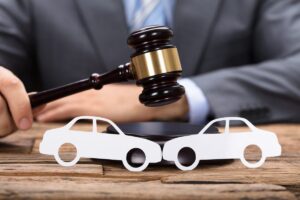Pedestrian crosswalk accidents are often devastating, leaving victims with severe injuries, long recovery periods, and significant medical expenses. While many people assume that pedestrians always have the right of way, the truth is that proving fault in these cases isn’t always straightforward. To recover full compensation, you need strong evidence that the driver was legally responsible for the crash. “pedestrian crosswalk accident fault”
This guide will walk you through the key factors in proving fault, the types of evidence that strengthen your claim, and why hiring an attorney can be the difference between a denied claim and a successful settlement.
Understanding the Law on Pedestrian Right of Way
In most states, drivers must yield to pedestrians in marked crosswalks. However, this doesn’t mean pedestrians are automatically free from scrutiny. Courts will still look at whether:
- The crosswalk was clearly marked or signalized
- The pedestrian was crossing legally (with the signal or within the marked area)
- The driver had a reasonable opportunity to stop or yield
Knowing these rules is essential because the insurance company will often try to argue that you were partially responsible to reduce or deny your claim.
Common Causes of Crosswalk Accidents
Several driver behaviors frequently lead to pedestrian accidents in crosswalks:
- Distracted driving – Texting, talking on the phone, or adjusting in-car systems
- Speeding – Reduces reaction time and stopping distance
- Failing to yield – Ignoring crosswalk laws or running red lights/stop signs
- Driving under the influence – Alcohol and drugs impair judgment and reflexes
- Poor visibility conditions – Driving too fast for weather or lighting conditions
Identifying the cause is critical because it forms the basis of your argument that the driver was negligent.
Gathering Evidence to Prove the Driver’s Fault
Your case is only as strong as the evidence you present. Here’s what can make the difference:
1. Police Reports
A police report will include statements from both parties, witness accounts, and the officer’s observations — sometimes even their opinion on fault.
2. Witness Statements
Neutral eyewitnesses can help confirm that you had the right of way and that the driver failed to yield.
3. Surveillance Footage
Many intersections have traffic cameras, and nearby businesses often have security cameras that capture accidents.
4. Photos and Videos
Images of the accident scene, vehicle damage, skid marks, and traffic signals at the time of the accident help recreate events.
5. Expert Testimony
Accident reconstruction experts can analyze the evidence and show how the driver’s actions caused the crash.

The Role of Comparative Negligence
Some states use comparative negligence laws, meaning your compensation could be reduced if you are found partially at fault. For example, if you were crossing outside of the crosswalk or against a traffic signal, your settlement may be lowered by your percentage of fault.
Insurance adjusters often exploit this to minimize payouts — another reason why having a skilled attorney is crucial.
How an Attorney Strengthens Your Claim
A personal injury attorney can:
- Investigate the accident thoroughly
- Obtain and preserve crucial evidence before it disappears
- Work with experts to reconstruct the accident
- Handle all communication with the insurance company
- Negotiate aggressively for full compensation
Attorneys understand the tactics insurers use and can counter them effectively, ensuring you aren’t pressured into accepting a low settlement.
Common Damages in Pedestrian Crosswalk Accident Claims
When you prove fault, you may be entitled to compensation for:
- Medical expenses – Hospital bills, surgeries, rehabilitation, and future care
- Lost wages – Income you missed during recovery and potential future earnings
- Pain and suffering – Physical pain and emotional distress caused by the accident
- Loss of enjoyment of life – Limitations on hobbies, activities, and daily living
- Permanent disability – If the injuries cause long-term or permanent impairments
Steps to Take Immediately After a Crosswalk Accident
- Seek medical attention – Even if injuries seem minor, some symptoms take days to appear.
- Call the police – Ensure there’s an official accident report.
- Gather evidence – Take photos, collect witness contact information, and note traffic conditions.
- Avoid speaking to the driver’s insurer – They may use your words against you.
- Contact a personal injury attorney – The sooner you involve a lawyer, the better your chances of building a strong case.
Don’t Let the Insurance Company Decide What Your Case is Worth
Insurance companies are motivated to close claims quickly and cheaply. Without proper representation and evidence, they may deny fault or offer a settlement far below what you deserve.
If you’ve been hit in a pedestrian crosswalk accident, you have legal rights — but proving fault requires strategic action, compelling evidence, and professional advocacy.
Don’t risk losing the compensation you need for recovery.
Get a free case evaluation to learn your options and build a strong claim today.
Click here for your FREE case evaluation
“pedestrian crosswalk accident fault”

